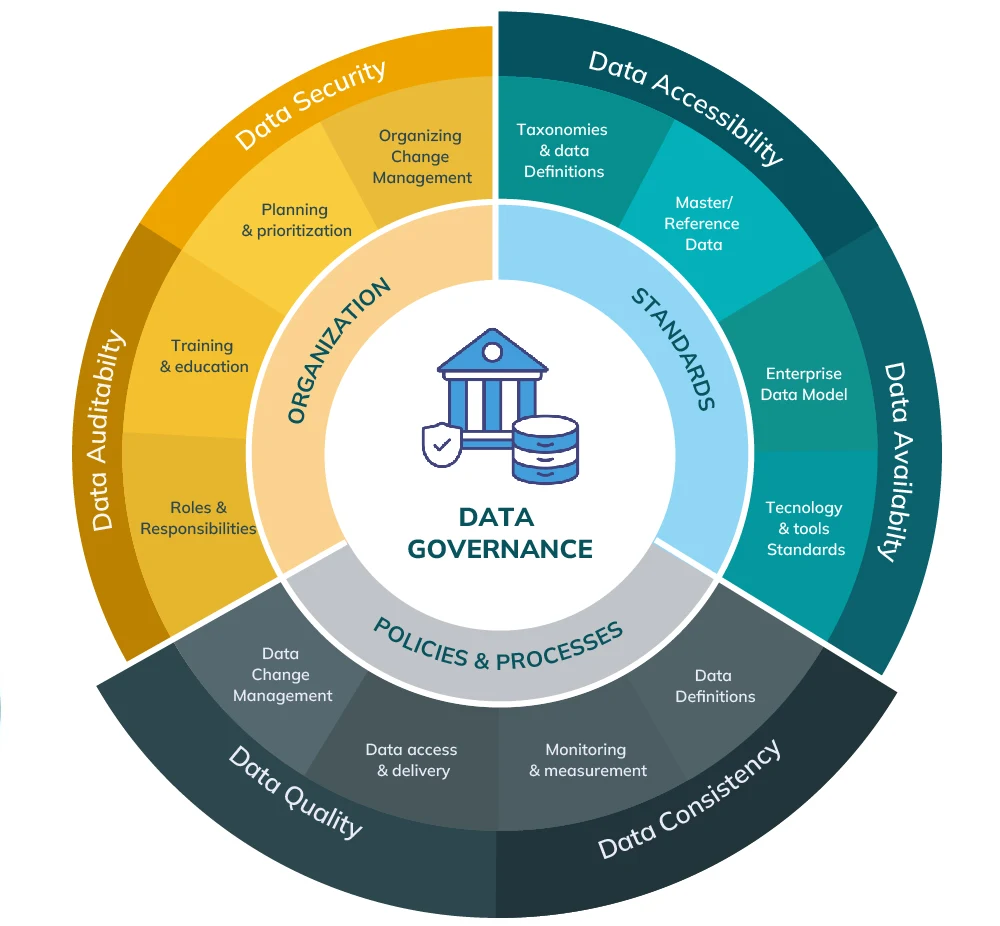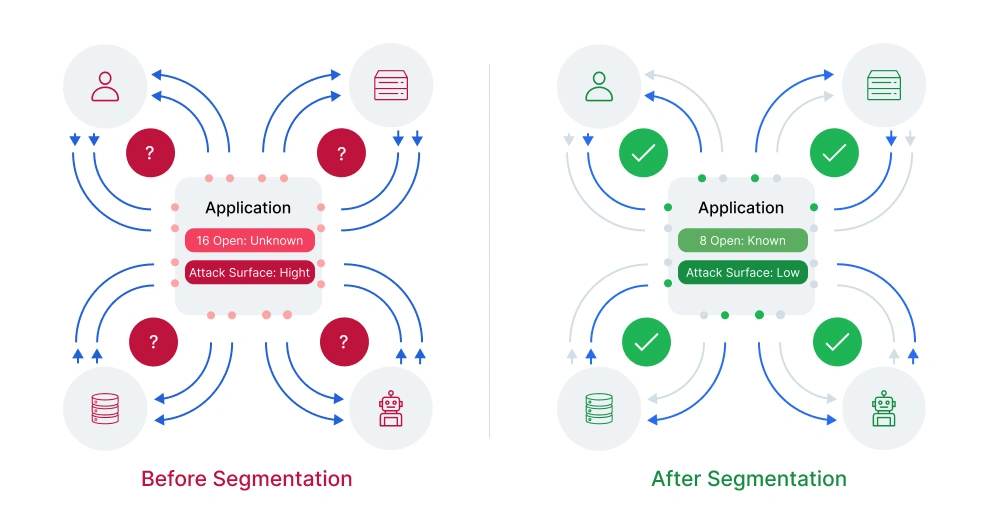
 Cybersecurity
CybersecurityThe Cost of Customer Data Breaches in Retail & How to Prevent Them

Content
In retail, your customers’ trust is everything. But that trust can disappear overnight if their personal data ends up in the wrong hands. Whether you’re a large chain or a fast-growing e-commerce brand, cyber attacks on retailers are getting more frequent and more expensive.
According to the Cost of a Data Breach report, the average data breach in retail now costs over $4.88 million. That’s not just lost sales or stolen records. It’s legal fees, customer compensation, system repairs, and long-term damage to your reputation.
Retailers today manage complex systems from POS networks and inventory tools to e-commerce platforms and third-party apps. Each adds new entry points for attackers and traditional security measures often fall short.
In this article, we’ll break down the real cost of data breaches in retail. You’ll learn how these incidents affect your bottom line, brand, and customer loyalty, and more importantly, how to stay ahead by strengthening data protection.
Why a Customer Data Breach Costs More Than You Think
When a mid-sized retail brand is hit by a data breach, the first shock is often financial, sometimes millions paid in ransom, or lost in immediate business disruption. But the real damage unfolds in the days and weeks that follow.
Executives are pulled into urgent crisis meetings. Legal and compliance teams scramble. IT staff work around the clock to assess damage, patch vulnerabilities, and restore systems. External consultants and PR agencies are brought in to manage messaging, reassure customers, and mitigate media fallout.
trust the fragile foundation of any retail business starts to crumble. Loyal customers hesitate. Carts are abandoned. App usage drops. Even after the breach is technically "contained," the aftershocks ripple across operations: insurance premiums spike, regulatory scrutiny intensifies, and internal morale dips under the pressure.
This is the side of data breaches that rarely makes headlines. It’s not just about fines or one-time losses; it’s about months of missed sales, years of rebuilding customer loyalty, and the invisible cost of brand damage that lingers far longer than the attackers do.
Here’s what’s really at stake when customer data security is compromised.
1. Lost Revenue from Data That No Longer Drives Growth
Customer data drives nearly every retail function, from marketing and personalization to loyalty programs and inventory management. With clean, accurate data, you can anticipate shopper needs, create relevant offers, and build long-term loyalty.
But once a breach happens, or when your data becomes outdated or inaccurate, that valuable asset quickly turns into a liability. Your ability to personalize takes a major hit. You start sending irrelevant offers, product suggestions fall flat, and communication becomes generic and impersonal the opposite of what modern consumers expect.
For example, imagine a customer who bought ski boots last season. With accurate data, you could recommend matching gear before their next trip. But if that purchase history is lost or incomplete, that opportunity disappears.
This isn’t just theoretical. A Gartner study revealed that poor data quality costs organizations an average of $15 million annually, quietly dragging down retail performance instead of driving growth.
2. Increased Operational Costs from Fixing Broken Data
While the public sees data breaches as front-page news, the real damage often happens quietly in the background, where teams are left to clean up the mess.
Customer service agents suddenly have to verify basic order information manually because systems no longer align. Marketing teams hesitate to launch campaigns because they don’t trust the data. IT staff are forced to divert time and budget toward patching broken connections or reconciling mismatched customer records.
These small inefficiencies add up. And in retail, where speed and accuracy are everything, this kind of friction cripples daily operations.
In other words, compromised data equals broken trust, not just with customers, but across internal teams. Instead of spending time on meaningful work like serving customers or optimizing campaigns, staff are stuck fixing problems that shouldn’t exist in the first place.
What starts as a glitch with a duplicate record or outdated email address quickly snowballs into a system-wide bottleneck. And when you're already working on tight margins, that drag on productivity becomes a hidden but very real cost.
3. Damage to Customer Trust That Hurts Long-Term Sales
Perhaps the most difficult impact of a data breach to quantify, but also the most dangerous, is the loss of customer trust.
Trust is hard-won and easily lost. Customers might tolerate a late delivery or the occasional service hiccup, but when their personal information is mishandled, confidence in your brand can collapse. And that erosion of trust doesn’t always show up as complaints. Often, it shows up as silence, fewer logins, lower engagement, and customers quietly walking away.
Not the seamless, personalized experience you were hoping for, thanks to bad customer data. And when personalization drives a 5–25% lift in revenue, having trustworthy data is crucial.
They won’t just walk away from your brand. A study found that one in three consumers will stop doing business with a company entirely after a single bad experience, especially one involving their personal data.
One example of this is the 2013 Target data breach, which compromised approximately 40 million payment card records and the personal data of up to 70 million customers. The incident resulted in direct costs exceeding $200 million, covering legal fees, settlements, and investments in enhanced security. But the financial toll went beyond immediate expenses: in the quarter following the breach, Target’s profits plunged by 46%, and same-store sales fell over 5%, due largely to lost customer confidence and negative publicity.
Retail Data Breach Statistics You Can’t Ignore
In 2024, a staggering 80% of retailers fell victim to some form of cyberattack, underscoring how relentlessly threat actors target this sector. Looking ahead, over half of retailers, 52%, believe they face an even greater risk of attacks in 2025 as cybercriminals refine their methods and exploit new vulnerabilities.
Credential phishing has emerged as the most common tactic, accounting for nearly 60% of cyber incidents in retail. Malware infections make up about 22%, while ransomware attacks, which can cripple operations overnight, represent over 13%. Distributed Denial of Service (DDoS) attacks, although less frequent at around 10%, can still disrupt online stores and erode customer trust.
The financial fallout is severe. Each retail data breach now costs businesses an average of $2.96 million in direct expenses alone, not to mention the long-term reputational damage. The impact on customer loyalty is equally devastating. After a breach, 70% of shoppers say they would abandon a merchant altogether, 68% reduce their online spending, and 42% go as far as deleting their accounts permanently.
With 24% of all global cyberattacks targeting the retail industry, it remains the top sector for data breaches worldwide. This harsh reality calls for stronger cybersecurity measures and constant vigilance.
5 Key Types of Cyber Attacks in Retail
Retailers are prime targets for a wide range of cyberattacks, each threatening customer trust, operational continuity, and financial stability. Below are the most common attack types, explained
aren’t brute force attacks, they're stealthy and often inside your network before you know it.
1. Web Application Attacks
Cybercriminals are smart and they strike when retailers are at their busiest. Nearly half of all retail cyberattacks now focus on vulnerable points like shopping carts, login pages, and search bars, aiming to steal customer data or cripple online stores. During the 2021 holiday season alone, Layer 7 DDoS attacks spiked by 200 percent, causing checkout failures and website crashes at the worst possible time. Downtime means immediate revenue loss and frustrated customers who may never come back. These attacks are highly automated and carefully timed to cause maximum damage when defenses are stretched thin. Without strong web application protection, your busiest sales season could easily turn into your most vulnerable moment.
2. Phishing and Social Engineering
Phishing scams and social engineering tactics are the most common entry points for attackers. In the retail industry, 67% of breaches begin with phishing emails that trick employees or partners into revealing credentials or clicking malicious links. Human error plays a major role, contributing to 95% of all breaches in the sector, highlighting the need for strong security training and email protection.
3. Point-of-Sale (POS) Malware and Card Skimming
Attackers frequently target physical stores through malware on POS systems or card skimming devices. In some years, nearly half of all retail cyber incidents involved compromised payment infrastructure, leading to the theft of large volumes of customer credit card data. These attacks strike at the heart of consumer trust and are especially damaging to brand reputation.
4. DDoS Attacks Targeting Retail and E-commerce
A Distributed Denial of Service (DDoS) attack floods a website or server with massive amounts of traffic, overwhelming its capacity and forcing it offline. For retail and e-commerce sites, even a few minutes of downtime during peak hours can mean thousands in lost sales and damaged customer trust. Distributed Denial of Service (DDoS) attacks on retail platforms have surged by nearly 61% in the past year, posing a serious threat to online stores and e-commerce operations.
5. Supply Chain Attacks
Retailers increasingly fall victim to supply chain attacks, where cybercriminals compromise third-party vendors or platforms to infiltrate the main business. In 2024, 20% of retail breaches originated through supply chain vulnerabilities. These attacks bypass perimeter defenses and require retailers to assess the cybersecurity posture of every vendor they work with.
5 Strategies Retailers Can Use to Reduce the Cost of Customer Data Breaches
Customer data breaches in retail don’t just happen by accident; they're often the result of multiple weak points across complex systems and processes. To truly safeguard sensitive customer information and minimize breach risks, retailers need to implement a multi-layered, retail-specific cybersecurity approach that addresses unique industry challenges.
1. Strengthen Data Governance to Avoid Costly Breach Fallout
In retail, customer data flows through countless touchpoints from POS systems and ecommerce checkouts to loyalty programs and delivery apps. Without tight control over this data, retailers risk losing millions in breach-related costs caused by slow breach detection, compliance penalties, and prolonged remediation efforts.
A fragmented view of customer data leads to duplicated or stale records, which not only confuse marketing campaigns but also inflate the scope and cost of breaches. For example, when a breach hits, unclear data ownership can delay identifying affected customers, increasing notification expenses and regulatory fines.

By making data governance a business priority not just a compliance checkbox retailers can drastically reduce the financial damage caused by customer data breaches and keep their operations running smoothly.
2. Harden Systems Against Bot Attacks
Now that we know how much damage bad bots can cause, the real question is: What can retailers do to stop them? The key is using smart, layered defenses that keep bots out without getting in the way of real customers.
Here are proven strategies to protect your business from bot attacks:
3. Fortify Against DDoS and Targeted Attacks to Minimize Disruption Costs
DDoS attacks on retail sites can cause major downtime, leading to lost sales and hurting your brand reputation. To combat this, use AI-powered traffic analysis to spot unusual patterns or spikes early. Build redundant servers and leverage Content Delivery Networks (CDNs) to distribute traffic and reduce the risk of overload.
Prepare a detailed incident response plan with clear communication and escalation steps. Invest in real-time alerts and automated mitigation tools for swift action. Collaborate with your ISP for upstream filtering to block malicious traffic before it reaches you. Regularly test your defenses through stress testing or audits.
Don’t forget to train your staff on phishing and social engineering tactics that often accompany these attacks. Balancing prevention, detection, and response ensures retailers reduce downtime and protect revenue effectively.
4. Outsource Cybersecurity to Cut Costs and Strengthen Defense
Retailers face growing cybersecurity threats that require continuous monitoring, advanced technology, and expert response resources that can be expensive and hard to maintain internally.
5. Segment the Retail Network to Contain and Control Breaches
In retail environments, customer data flows through multiple systems — from point-of-sale (POS) terminals and inventory databases to loyalty programs and payment gateways. Without proper separation, a breach in one area can quickly spread laterally across the entire network, exposing sensitive information like payment card details and personally identifiable information (PII).
Network segmentation divides the retail IT infrastructure into isolated zones, limiting how far an attacker can move within your systems after a breach. For example, separating POS devices from corporate networks ensures that if one segment is compromised, attackers cannot easily access customer financial data or internal databases.

Or
Advanced network monitoring tools track each segment independently, detecting unusual activities such as lateral movement, advanced persistent threats (APTs), or unauthorized access attempts. This granular visibility enables rapid incident detection and response before breaches escalate.
By implementing network segmentation, retailers effectively create digital “firewalls” inside their own infrastructure, reducing breach impact, simplifying compliance with standards like PCI DSS, and ultimately lowering the financial and operational costs associated with data breaches.
Real-World Case Studies on Customer Data Breaches in the Retail Sector
Overlooking cybersecurity in retail can lead to devastating consequences, including massive financial losses, operational disruption, and irreversible damage to customer trust. Here are two recent case studies that highlight the real impact of data breaches in the retail industry:
1. Hot Topic Data Breach
In October 2024, Hot Topic, a prominent U.S. retail chain, experienced a massive data breach affecting approximately 57 million customer accounts. The breach was attributed to a hacker known as “Satanic,” who exploited a vulnerability in a cloud-based data management platform used by Hot Topic. The compromised data included email addresses, phone numbers, mailing addresses, purchase history, and partial credit card information for millions of customers. Despite the scale of the breach, Hot Topic did not publicly confirm the incident or notify affected customers, raising concerns about transparency and response practices in the retail industry.
2. Marks & Spencer (M&S) Cyber Attack – April 2025
In April 2025, UK retail giant Marks & Spencer (M&S) fell victim to a cyberattack carried out by the ransomware group DragonForce. The attack disrupted M&S's operations, including its online clothing sales and Click & Collect services, leading to an estimated £300 million loss in operating profits. The company sought assistance from the FBI and the UK's National Cyber Security Centre to address the incident. While no customer data was reported stolen, the attack underscored the vulnerabilities in legacy IT systems and the significant operational impact of cyberattacks on retail businesses.
Conclusion
In 2025, customer data breaches continue to impose heavy costs on retailers, far beyond immediate financial losses. These breaches erode customer trust, disrupt operations, and weaken brand reputation, often causing damage that lasts years.
As cyber threats grow more sophisticated, retailers must adopt a multi-layered, proactive approach to data security, combining strong governance, advanced technologies, skilled partnerships, and continuous monitoring.
Investing strategically in cybersecurity not only reduces the risk and cost of breaches but also safeguards the customer relationships that drive growth in an increasingly digital retail landscape.
FAQs
Discover Our Full Range of Services
Click HereExplore the Industries We Serve
Click HereBlog Category
Related Articles

Find the leading accounting firms in Singapore trusted by businesses for audit, tax, and advisory services.
November 6, 2025
|

Explore the leading accounting firms in South Africa providing expert audit, tax, cloud accounting, and payroll services. Learn about their key features and unique offerings.
November 6, 2025
|

Explore what project accounting is, how it works, and why it’s essential for businesses. Understand key principles, revenue recognition methods, and best practices to improve your knowledge.
October 7, 2025
|
Services We Provide
Industries We Serve





.webp)